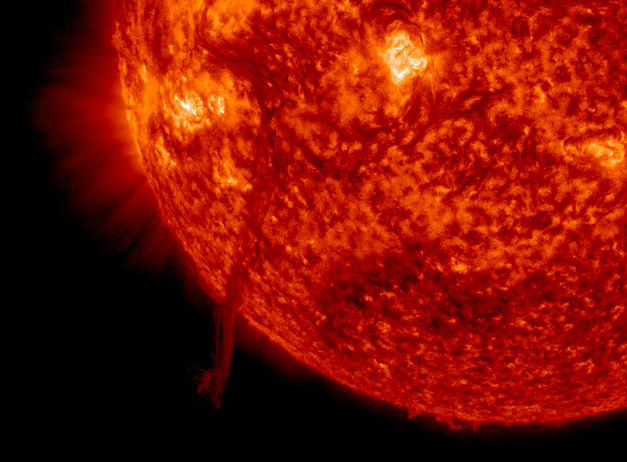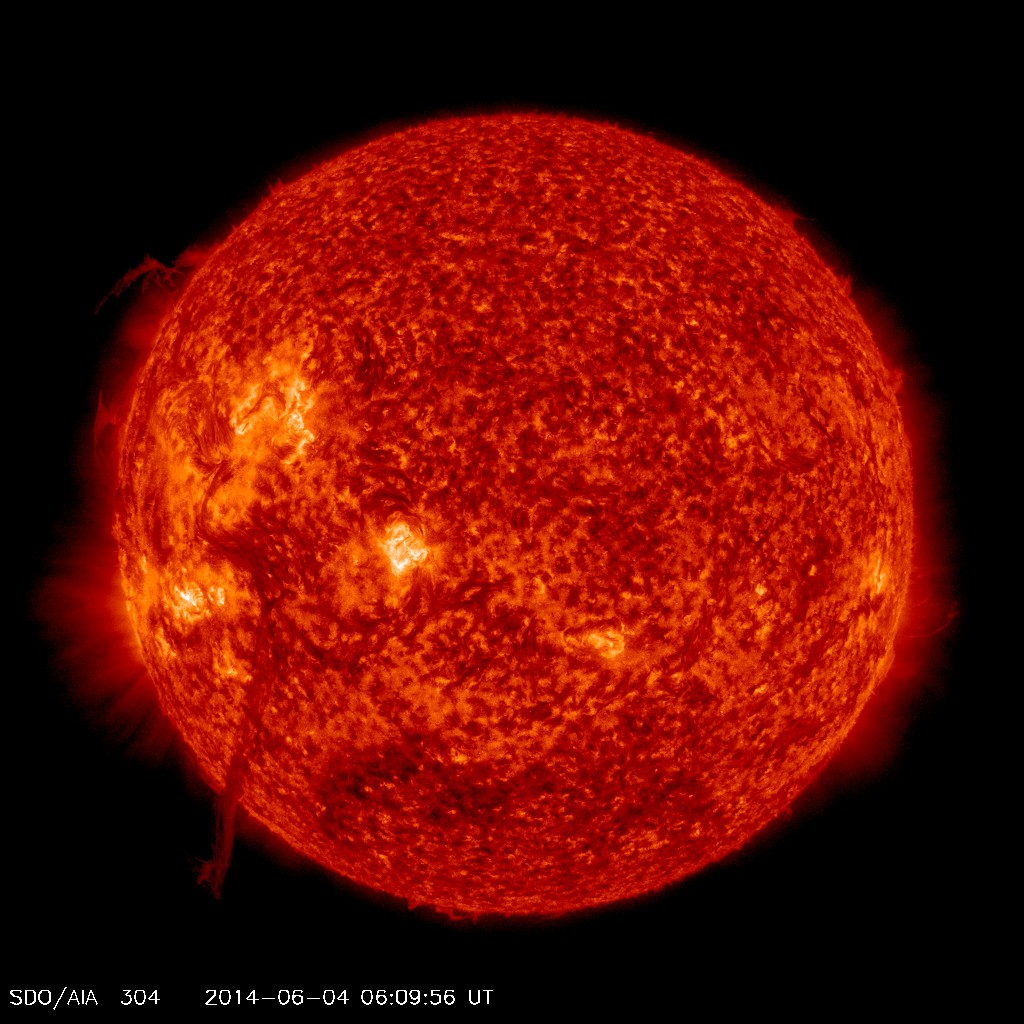Giant Sun Plasma Tendril Sparks Solar Eruption (Video)

A massive formation on the sun made of super-hot magnetic plasma erupted this week in an explosive solar storm captured on video by NASA spacecraft.
The huge plasma tendril, known as a solar filament, erupted on Wednesday (June 4), blowing part of itself out into space in what astronomers call a coronal mass ejection, or CME. NASA's powerful Solar Dynamics Observatory recorded video of the solar filament eruption while the Solar and Heliospheric Observatory tracked the subsequent CME.
Astronomer Tony Phillips of Spaceweather.com, a website that tracks solar flare events, wrote in a post Thursday (June 5) that amateur and professional astronomers had watched the filament for more than a week to see how it would meet its end. [Biggest Solar Flares of 2014 (Photos)]
"Astronomers had been bracing for the possibility that the filament would collapse, causing a Hyder flare when it landed on the solar surface," Phillips wrote in the June 5 post. "Instead, it erupted and hurled part of itself into space."
Phillips added that the solar eruption was not aimed directly at Earth, but could deal a "glancing blow" to the planet's magnetic field on Saturday (June 7), possibly amplifying northern lights displays.
NASA's Solar Dynamics Observatory and SOHO — a joint mission by NASA and the European Space Agency — are part of a fleet of space observatories regularly watching the sun for signs of solar storms, eruptions and flares.
The most powerful solar eruptions can pose a danger to astronauts and spacecraft in space, as well as interrupt satellite navigation and communications systems. They can also interfere with ground-based power and communications systems.
Breaking space news, the latest updates on rocket launches, skywatching events and more!
Strong and moderate solar storms can also supercharge the Earth's auroras, triggering dazzling northern lights shows.
Last year, the sun passed its peak period of solar activity in its current 13-year weather cycle, known as Solar Cycle 24.
Email Tariq Malik at tmalik@space.com or follow him @tariqjmalik and Google+. Follow us @Spacedotcom, Facebook and Google+. Original article on Space.com.

Tariq is the award-winning Editor-in-Chief of Space.com and joined the team in 2001. He covers human spaceflight, as well as skywatching and entertainment. He became Space.com's Editor-in-Chief in 2019. Before joining Space.com, Tariq was a staff reporter for The Los Angeles Times covering education and city beats in La Habra, Fullerton and Huntington Beach. He's a recipient of the 2022 Harry Kolcum Award for excellence in space reporting and the 2025 Space Pioneer Award from the National Space Society. He is an Eagle Scout and Space Camp alum with journalism degrees from the USC and NYU. You can find Tariq at Space.com and as the co-host to the This Week In Space podcast on the TWiT network. To see his latest project, you can follow Tariq on Twitter @tariqjmalik.

